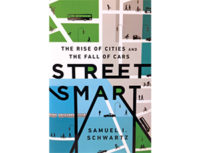If New York City’s East River bridges were on a Monopoly board, the Queensboro, Williamsburg, Manhattan and Brooklyn bridges would be akin to landing on "Free Parking" because they are not tolled crossings.

That is "just insane," says Samuel Schwartz, a former NYC deputy transportation commissioner also known as "Gridlock Sam." Since major highways lead to the East River’s toll crossings, scores of drivers—including truckers—transition to city streets to get to the free bridges. The Queensboro is a popular choice, as about 50,000 cars and trucks a year use it to avoid the tolls, exacerbating problems in the area including gridlock, pollution and safety concerns, he says. Also, with hefty tolls on four Staten Island bridges, "one would think Staten Island is the city’s central business district," says Schwartz, who is also president and CEO of the eponymous New York-based engineering firm.
"I say, let's start all over again," says Schwartz, acknowledging that the revenue stream from tolls is needed but that this stream should be adjusted and traffic better managed. His solution involves changing the city’s toll-collection formula by imposing $5 tolls each way on the currently free East River bridges and lowering tolls by $5 each way on the Throgs Neck, Whitestone, Robert F. Kennedy and Verrazano-Narrows bridges. Round-trip tolls on the two Rockaway, Queens bridges would also be lowered by $2 under the plan. His plan does not yet include Hudson River crossings.
He says the plan is a more equitable transportation formula (ETF) for the city than the "insanity of what we've been doing." The ETF focuses on Manhattan’s central business district south of 86th street. In this district, it would end the current monthly parking tax rebate for Manhattan residents and impose a surcharge on taxi and for-hire vehicle trips. It would also charge cyclists 50 cents each way for East River bridge crossings. Bus fares in neighborhoods with no subways would be reduced by $1, and there would be no local bus service reductions for three years without community board approvals.
Annually, the plan would yield $1.4 billion in net revenue and create 35,000 recurring jobs, Schwartz says. He has been shopping the idea around town for the last 18 months to gather support from elected officials, labor groups and others. He says that with support from the "titans of industry" his ETF would stand a chance in Albany, where congestion-pricing schemes have failed several times before.
He does not like to refer to the plan as congestion pricing, however, because of the negativity surrounding the term in the outer boroughs especially. The ETF is "fair pricing," he says, as it applies market-driven pricing where there is no serious congestion and where good transit options already exist, and it lowers or eliminates tolls at poor transit locations.



